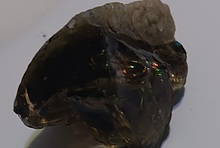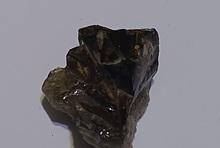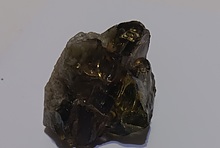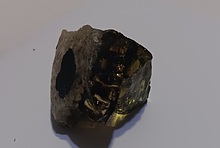Home PageAbout MindatThe Mindat ManualHistory of MindatCopyright StatusWho We AreContact UsAdvertise on Mindat
Donate to MindatCorporate SponsorshipSponsor a PageSponsored PagesMindat AdvertisersAdvertise on Mindat
Learning CenterWhat is a mineral?The most common minerals on earthInformation for EducatorsMindat ArticlesThe ElementsThe Rock H. Currier Digital LibraryGeologic Time
Minerals by PropertiesMinerals by ChemistryAdvanced Locality SearchRandom MineralRandom LocalitySearch by minIDLocalities Near MeSearch ArticlesSearch GlossaryMore Search Options
The Mindat ManualAdd a New PhotoRate PhotosLocality Edit ReportCoordinate Completion ReportAdd Glossary Item
Mining CompaniesStatisticsUsersMineral MuseumsClubs & OrganizationsMineral Shows & EventsThe Mindat DirectoryDevice SettingsThe Mineral Quiz
Photo SearchPhoto GalleriesSearch by ColorNew Photos TodayNew Photos YesterdayMembers' Photo GalleriesPast Photo of the Day GalleryPhotography
╳Discussions
💬 Home🔎 Search📅 LatestGroups
EducationOpen discussion area.Fakes & FraudsOpen discussion area.Field CollectingOpen discussion area.FossilsOpen discussion area.Gems and GemologyOpen discussion area.GeneralOpen discussion area.How to ContributeOpen discussion area.Identity HelpOpen discussion area.Improving Mindat.orgOpen discussion area.LocalitiesOpen discussion area.Lost and Stolen SpecimensOpen discussion area.MarketplaceOpen discussion area.MeteoritesOpen discussion area.Mindat ProductsOpen discussion area.Mineral ExchangesOpen discussion area.Mineral PhotographyOpen discussion area.Mineral ShowsOpen discussion area.Mineralogical ClassificationOpen discussion area.Mineralogy CourseOpen discussion area.MineralsOpen discussion area.Minerals and MuseumsOpen discussion area.PhotosOpen discussion area.Techniques for CollectorsOpen discussion area.The Rock H. Currier Digital LibraryOpen discussion area.UV MineralsOpen discussion area.Recent Images in Discussions
Mineralogical ClassificationJaguéite description abstract (CanMin)

4th Feb 2005 21:06 UTCMarco E. Ciriotti
Abstract:
Jaguéite, with the simplified formula Cu2Pd3Se4, the copper analogue of chrisstanleyite, was discovered in a telethermal selenide vein-type deposit at the El Chire prospect, Los Llantenes District of La Rioja Province, Argentina. The new mineral species is generally associated with chrisstanleyite, particularly in intimate intergrowths, clausthalite, naumannite, tiemannite, klockmannite, berzelianite, umangite and aguilarite. Mercurian silver, native gold, and two unnamed compounds, chemically (Ag,Cu)6Hg2Pd2Se3 and (Ag,Cu)8Hg3(S,Se)7, occur as rare constituents. The selenide vein is hosted by metasedimentary rocks of Carboniferous age that belong to the Precordilleran terrane. Jaguéite occurs in anhedral grains that lack a distinct morphology. Aggregates of intergrown jaguéite and chrisstanleyite measure up to 100 × 20 µm; single grains, however, do not exceed 60 µm. The mineral is megascopically creamy yellowish in color, opaque and lacks internal reflections. It has a metallic luster and a black streak. It is brittle with an uneven fracture and without observable cleavage. VHN25 ranges between 464 and 772 (mean 612) kg/mm2, corresponding to a Mohs hardness of 5. In plane-polarized light, it is weakly to moderately bireflectant and slightly pleochroic, from light buff to creamy buff. Jaguéite is anisotropic; the rotation tints are brownish – bluish – greenish. The prominent spindle-shaped twins are almost identical to those in chrisstanleyite. The measured values of reflectance in air and oil, respectively, are 41.0–50.1, 27.0–31.9 (470 nm), 44.1–51.8, 29.2–33.8 (546 nm), 44.6–51.7, 29.4–33.7 (589 nm), 45.1–52.0, 30.2–34.1 (650 nm); values for 400–700 nm are tabulated. As an average, eight electron-microprobe analyses gave: Cu 15.7, Ag 1.59, Pd 42.04, Se 40.15, total 99.48 wt.%, corresponding to (Cu1.91Ag0.11)Σ2.02Pd3.05Se3.93 (basis: 9 atoms per formula unit). The ideal formula is Cu2Pd3Se4, which requires Cu 16.68, Pd 41.88, Se 41.44, total 100.00 wt.%. Jaguéite has a monoclinic cell with a 5.672(5), b 9.910(9), c 6.264(6) Å, β 115.40(2)º, V 318.1(5)Å3, space group P21/c and Z = 2. The calculated density is 8.01 g/cm3. The crystal structure was solved from single-crystal data obtained on a four-circle diffractometer with an area detector. The strongest eight lines in the calculated powder-diffraction pattern are: 2.759(23)(¯131), 2.676(100)(121), 2.630(64)(¯122), 2.508(31)(¯202), 2.269(27)(041), 1.950(27)(122), 1.920(36)(¯123) and 1.866(24)(¯241). Jaguéite and chrisstanleyite form a limited solid-solution series. The mineral is named after the village of Jagué, which is the closest settlement to the El Chire mine. Both the mineral and the mineral name were approved by the Commission on New Minerals and Mineral Names (IMA 2002–060).




Mindat.org is an outreach project of the Hudson Institute of Mineralogy, a 501(c)(3) not-for-profit organization.
Copyright © mindat.org and the Hudson Institute of Mineralogy 1993-2024, except where stated. Most political location boundaries are © OpenStreetMap contributors. Mindat.org relies on the contributions of thousands of members and supporters. Founded in 2000 by Jolyon Ralph.
Privacy Policy - Terms & Conditions - Contact Us / DMCA issues - Report a bug/vulnerability Current server date and time: April 19, 2024 07:08:07
Copyright © mindat.org and the Hudson Institute of Mineralogy 1993-2024, except where stated. Most political location boundaries are © OpenStreetMap contributors. Mindat.org relies on the contributions of thousands of members and supporters. Founded in 2000 by Jolyon Ralph.
Privacy Policy - Terms & Conditions - Contact Us / DMCA issues - Report a bug/vulnerability Current server date and time: April 19, 2024 07:08:07











